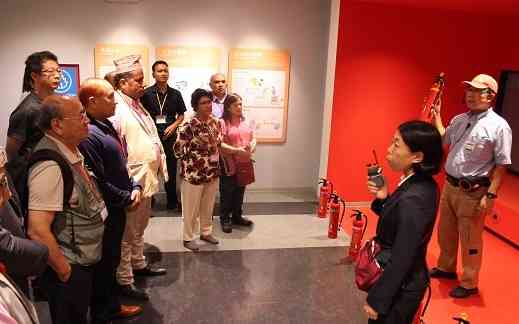CITYNET Disaster Cluster
The CITYNET Disaster Cluster (DC) was established to be a collaborative knowledge-sharing platform for DRR of CITYNET members across the Asia-Pacific region, led by CITYNET Yokohama Project Office.
Description
The CITYNET Disaster Cluster (DC) was established in 2005 after the 2004 Sumatra Earthquake and Indian Ocean Tsunami and the 2005 Kashmir earthquake. The goal of CITYNET’s Disaster Cluster is to mainstream DRR initiatives in cluster cities, this includes creating and managing a database of resources and contacts to foster collaborative projects. By creating an international city network that shares knowledge, cities can work together and tap into one another’s strengths and weaknesses.
Since its inception, the DC has implemented numerous DRR projects in coordination with several stakeholders, such as the reconstruction of a school in Pakistan, construction of community centers in Sri Lanka and Indonesia, support for DRR education in Nepal, community based adaptatin and resilience in the Philippines or the exchange of information on crisis management between members among several others.
Each year, CITYNET Yokohama Project Office (CYO) holds the Disaster Cluster Seminar (DCS), as a main event of the DC. The most recent DCS took place in Yokohama in early September 2019, and hosted over 60 participants from local governments, public sector organizations, private sector organizations, academia, and civil society organizations from across Asia-Pacific.
The DC assists member cities in reaching their Sendai Framework targets, specifically through target (f): Substantially enhance international cooperation to developing countries through adequate and sustainable support to complement their national actions for implementation of this Framework by 2030. As a project with the goal of increasing DRR knowledge throughout Asia-Pacific, the DC approaches this by facilitating connections between developing and developed countries.
All projects under the umbrella of "CITYNET Disaster Cluster" are listed here as deliverables. Any member of CITYNET can become a member of the Disaster Cluster to support and benefit from its programs.
Did the Sendai Framework change or contribute to changes in your activities/organization? If so, how?
When the Sendai Framework for Disaster Risk Reduction was adopted in 2015, the Disaster Cluster shifted towards completing projects that aligned with its priorities and targets. For the past two years, sessions at the Seminar have been focused on the Sendai Framework Priorities, with presenters detailing how their cities or organization achieve or strive to achieve each priority.
What led you to make this commitment/initiative?
What was your position before making this Voluntary Commitment / prior to the Sendai Framework?
When the Sendai Framework for Disaster Risk Reduction was adopted in 2015, the Disaster Cluster shifted towards completing projects that aligned with its priorities and targets. For example, the past two years, sessions at the Seminar have been focused on the Sendai Framework Priorities, with presenters detailing how their cities or organization achieve or strive to achieve each priority. Likewise, current and future projects are to be guided by Sendai priorities, targets and indicators.

